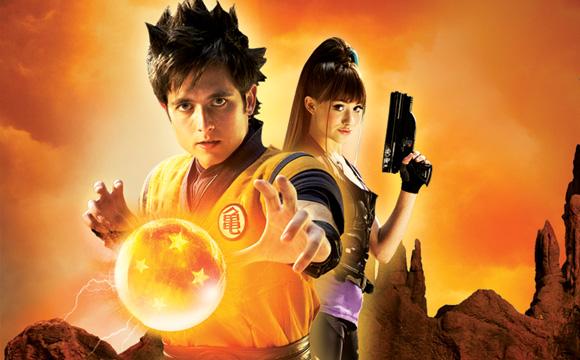
Whitewashing is not oversensitivity, it's a big problem
Changing core elements of a character for a film cannot be excused as a simple "artistic decision"
Whitewashing has existed almost since the invention of film. It's the act of making a white actor play a character of a different race or ethnicity, like Jim Sturgess in 21 (2008) or Rooney Mara as Tiger Lily in Pan (2015), and now it seems that with every new movie or television series the discussion irremediably goes back to this Hollywood phenomenon, or some form of it.
The controversy du jour is the Western adaptation of Ghost in the Shell, headlined by Scarlett Johansson and directed by Rupert Sanders. The film is based on the manga by Shirow Masamune and follows Major, a government agent with an artificial body but a human mind, in her mission to capture a criminal known as Kuze.
The news of the production of the movie was applauded, but when the casting of Johansson as the lead was revealed, the studio faced a lot of backlash. Regardless of the accusations of whitewashing, the film was completed, but every new bit of information of its imminent release, like stills or trailers, was met with resistance.
Since its conception, the live action movie of Ghost in the Shell has had its supporters and detractors, and there have been several arguments about how it represents the way in which the film industry takes away roles from Asian actors, its appropriation of cultures and the invisibility of certain races on the big screen. However, it has also been said that the creative choices were a way to rescue the project and give it a chance to tell its story, since the track record of Asian properties being adapted by the West is not the best.
Money talks
Manga (Japanese comic books) and anime are still widely unknown for a great majority of the Western population, and while consuming these products is seen as normal in Japan, in other parts of the world it still regarded as a childish pastime. The studio was going to produce a film with a budget of $110 million, featuring a storyline that was a mystery to most of the mainstream audience. Therefore,, they needed a guarantee they were going to get their money back.
This is the reason Scarlet Johansson was cast: she is an internationally recognisable actress, an action star and has experience with sci-fi themes. Writer and producer Max Landis explained this reasoning in a controversial video.
The risk was too high not to attach a bankable name to such an ambitious movie. Or so they thought, because the movie has not been doing great in the money department.
Star power (sometimes) helps
The argument that there are no big Latino, Asian or Native American actors to carry the weight of an important film has been a popular one for many years. This justifies the practise of whitewashing, according to Hollywood. However, it’s not always as effective as the people in charge may like to think.
In the case of Exodus: Gods and Kings (2014), director Ridley Scott explained his casting choices as having purely economic reasons: “I can’t mount a film of this budget, where I have to rely on tax rebates in Spain, and say that my lead actor is Mohammad so-and-so from such-and-such”, he said to Variety. The story he told took place in Ancient Egypt and the main characters were played by Christian Bale, Sigourney Weaver, John Turturro and Joel Edgerton.
The risk was too high not to attach a bankable name to such an ambitious movie
Yet there are cases where whitewashing pays off. Argo (2012) was the passion project of Ben Affleck, a film he directed and in which he starred as Tony Mendez, a CIA officer tasked with rescuing American diplomats trapped in Iran in 1979. The movie was acclaimed by critics as well as the public and it won the Oscar for Best Picture; the fact that Affleck, who is of English, Irish and German descent, played a half-Mexican man was an afterthought.
Hollywood has this belief that for a film to do well, it has to have big names attached to it. If this isn't the case, people are not going to shell out money to watch the movie and the investment is not going to be returned.
Mistakes from the past
There is also the less-than-stellar history of Western adaptations of Japanese products and perhaps the most infamous one has been Dragon Ball: Evolution (2009). There was much excitement about the project and it was seen as the gateway to many sequels and the production of other nostalgic enterprises. However, it was an awful, awful movie. Suffice to say that the main Japanese character, Goku, was played by white American actor Justin Chatwin.

*cringe*
Before the James Wong film, there was Speed Racer (2008) and the adaptation of The Last Airbender (2010) came two years later, both of which had Caucasian actors playing the lead characters, even though the original source was very clearly Asian.
Due to its shameful track record, Hollywood was not willing to risk delving into the waters of Japanese material without some sort of guarantee: big white names on the marquee, recognisable enough to make a buck. They also seemed to mix Caucasians and Asians in the cast, to avoid the same criticisms of the past, but the white actors had a more prominent role and in some cases, the Asian actors were cast as the villain.
Why it is a problem
Making a movie is not an easy feat; there are many things to take into account and even more people that you have to please, but there are also standards and morals to uphold. Whitewashing, blackface, brownface or yellowface is not just about denying jobs to minority actors, appropriating the stories of these groups, perpetuating stereotypes or keeping them invisible, it is about undermining their value as human beings and turning them into stepping stones, props, for white artists.
Even though the main character's appearance is explained in Ghost in the Shell, which sounds reasonable enough and appeals to the globalised society that the film makers refer to, the name of the character is changed from Motoko Kusanagi to Mira Killian. She is changed from an Asian woman to a Caucasian one. The underlying message is simple: white is better than yellow, black or brown and the transition to white, to be more "Western", is for the betterment of oneself.

Improving the "shell"
It's not oversensitivity on part of the audience, or a creative choice on part of the production team, it is a problem that has been going on since the beginning. Even though we take pride in our technological advancements, scientific breakthroughs and the richness of globalised culture, we still turn a blind eye to the matter of representation and the first step to fixing this issue is to acknowledge it.
We had better start working on it soon as well, because the trailer for the Netflix series Death Note dropped a few weeks ago and it looks like it will keep the conversation about whitewashing going for a while.
References
Nishime, L. (2017). Whitewashing Yellow Futures in Ex Machina, Cloud Atlas, and Advantageous: Gender, Labor, and Technology in Sci-fi Film. Journal Of Asian American Studies, 20(1), 29-49.